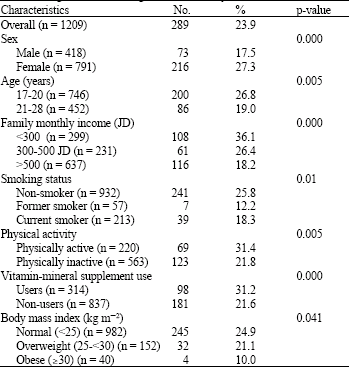Research Article
Vegetarianism among Jordan University Students
Department of Family and Community Medicine, Faculty of Medicine, University of Jordan, Amman 11942, Jordan
Omar K. Alboqai
Department of Clinical Nutrition, College of Royal Medical Services for Allied Health Professions, Royal Medical Services, Amman, Jordan
Sameer Kofahi
Department of Family Medicine, Prince Rashed Hospital, Royal Medical Services, Irbid, Jordan
Adib A. Aughsteen
Department of Anatomy and Physiology, Faculty of Medicine, Hashemite University, Zarka 13115, Jordan
Khader El Masri
Department of Food Technology and Nutrition, Faculty of Agriculture, University of Jordan, Amman 11942, Jordan











